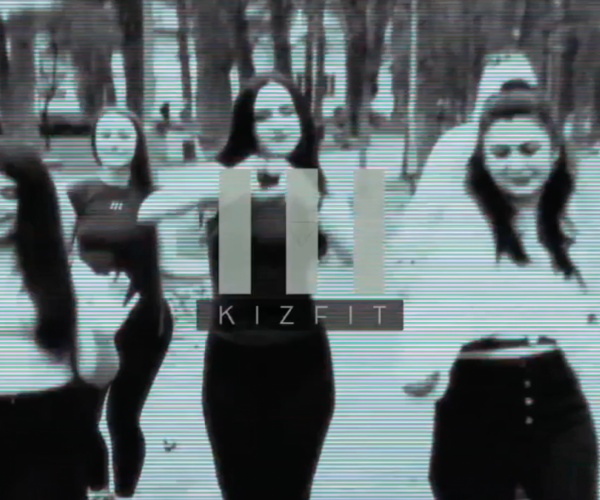🧍♂️🧍♀️Individual Choreography in Kizomba Fusion: Train, Create, Transform
Kizomba Fusion is rooted in connection—but that connection begins with yourself. Practicing individual choreography is one of the most powerful tools for dancers who want to build technique, refine style, and expand creativity. Whether you’re training solo or with others, learning and creating choreography opens a whole new dimension of depth in your dance.
🎯 Why Individual Choreography is So Useful
When you dance choreography alone, you’re not just memorizing steps—you’re developing your personal skillset in a focused, structured way. Here's what it strengthens:
- Body Awareness: You become more conscious of how your body moves, where your weight is, how you transition.
- Technique: You isolate and clean up footwork, posture, turns, and transitions.
- Musicality: You learn how to match movement with music structure—timing, accents, breaks, and energy shifts.
- Confidence: You stop relying on a partner and start owning your own expression.
- Creativity: The more vocabulary you build, the more freely you can improvise and express.
Training with individual choreo helps both leaders and followers develop the control and discipline needed for better partner dancing.
🌱 Tips for Beginners: How to Start & Why It Helps
If you're just starting your journey in Kizomba Fusion, individual choreography can accelerate your progress and deepen your understanding.
Here’s how to start, even with limited experience:
- ✅ Use the steps you already know
- Don’t wait until you learn “enough” steps. Start combining the ones you've learned in class into short choreos—it's a great way to remember and solidify them.
- 🎵 Focus on musical connection
- Pick slow or mid-tempo tracks. Try to follow the rhythm and listen for pauses, breaks, and changes in energy.
- ⏸️ Incorporate pauses and slow motion
- These moments help you develop control and teach you how to play with contrast—not every move needs to be fast or complex.
- 🔁 Repeat to build confidence
- Repetition helps you feel grounded. Practicing the same phrase multiple times will improve clarity and muscle memory.
- 🧠 Train creativity and flow
- Choreography gives you a “sandbox” to play in. You start seeing how transitions work, how moves connect, and how to express the music.
💡 Bonus tip: Even 30 seconds of choreography is enough to learn a lot. Keep it simple and expressive.
🔥 Advice for Advanced Dancers: Take It to the Next Level
If you’ve been dancing for a while and have a broader vocabulary, individual choreography can be a space for refinement, exploration, and style development.
Here’s how to challenge yourself:
- 🎯 Focus on transitions
- It’s not just about steps—it’s how you move between them. Smooth transitions create a more professional and fluid look.
- 🧘♂️ Add dynamics and textures
- Play with levels, body isolations, and energy shifts. Mix grounded steps with lifted moments, flowing parts with sharp accents.
- 🎭 Use emotion and storytelling
- Don’t just execute—express. Choose music that resonates with you emotionally and choreograph to tell a story, not just match the beat.
- 🎬 Film and review your practice
- Watching yourself helps you catch habits, polish details, and see where your style is naturally evolving.
- 🧱 Build a style bank
- Create a few short choreos exploring different styles or moods: lyrical, energetic, sensual, or experimental. This helps expand your expressive range.
- 👀 Collaborate or get feedback
- Sharing your choreo with others—teachers, peers, or social media—can offer new insight and inspiration.
🚦How to Start Training Individual Choreography
No matter your level, here’s a reliable structure to begin:
- Choose the Right Music 🎶
- Pick a track that speaks to you emotionally and rhythmically.
- Break It Down ⏱️
- Divide the song into phrases—intro, chorus, bridge—and choreograph one section at a time.
- Start Simple 👣
- Build with movements you know. Focus first on quality and timing.
- Layer Intention and Expression 🧠
- Once the steps are solid, add breath, energy, and purpose.
- Practice Consistently 🔁
- Don’t try to perfect it in one day. Come back to it over time.
🎯 What to Focus On When Learning Choreography
- Timing: Match steps to the music, not just counts.
- Precision: Clean, intentional movement matters more than complexity.
- Isolation: Control one body part at a time—arms, hips, feet.
- Consistency: Practice until your body remembers the movement.
- Intention: Always ask, what do I want to say with this?
💡 Final Thoughts
Whether you’re a beginner looking to grow faster, or an advanced dancer developing your style, individual choreography in Kizomba Fusion is a game-changing tool. It strengthens technique, deepens your relationship with music, and helps you connect with yourself in a more intentional and expressive way.
🎶✨ So don’t wait—start choreographing your dance journey, one phrase at a time.
